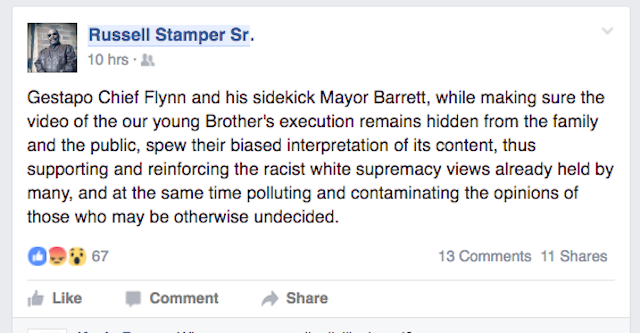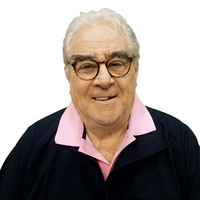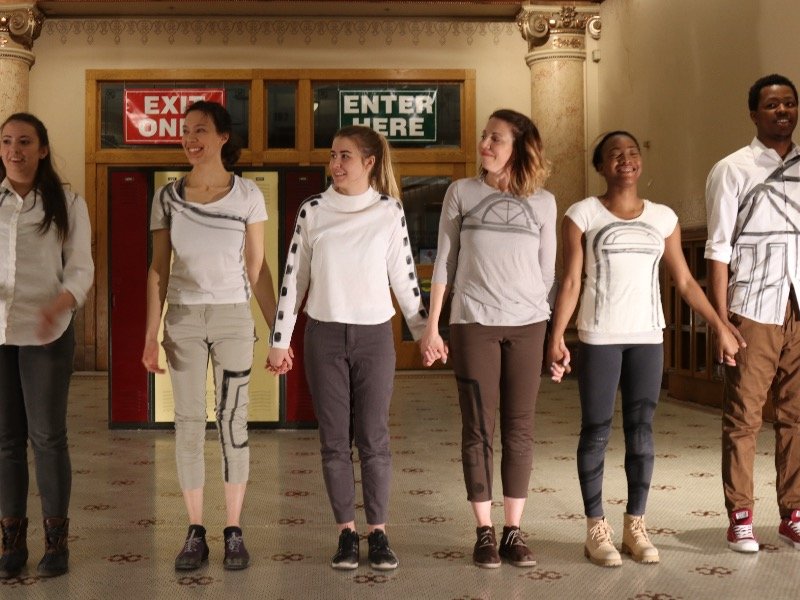The opinions expressed in this piece do not necessarily reflect the opinions of OnMilwaukee.com, its advertisers or editorial staff.
As Milwaukee struggles with the issue of how to deal with racial violence, it’s critical to find answers to two key questions.
The first question, of course, is what caused this whole situation.
Since the Sherman Park explosion, we’ve had countless experts talking about all the causes: income inequality, hopelessness, housing discrimination, lack of job opportunities, high incarceration rates, woeful educational opportunities.
What all the experts are missing is that all of those things are not root causes. They are symptoms. They are symptoms of a racist country and city. They are symptoms of a historical thread of prejudice by white people against black people.
Dr. Amanda Seligman is the chair of the History Department at the University of Wisconsin-Milwaukee and an expert in the history of racism.
"Racism is not just one thing," she said in an interview this week after the Sherman Park riots. "It’s many things. It repeats itself in different ways in different times.
"Nineteenth century racism was rooted in slavery. Then came the Jim Crow laws after the Civil War. I look at the racism in Milwaukee as the period from the 1960s until now.
"In every new period, people remembered what they have been through, and they didn’t like living in a new socio-economic climate. Each time, they reinvented the practice of racism."
If you start 200 years ago and walk through American history, you see the racist belief that black people are inferior to white people manifested in a variety of ways that we don’t have to delineate here.
On a personal level, there is a complex set of motivations and circumstances that go into the development of racist beliefs. Dr. Clay Routledge of North Dakota State has written extensively about the psychology of racism.
He writes that many studies have shown that white people find that racism allows them to reinforce or improve their sense of self-esteem. People like to see their group as a positive one, and by looking down on another group, it becomes easier to do so.
He writes that humans are hierarchical animals. To have a hierarchy, there must be status differences between people. Racism helps preserve status differences because it oppresses minority groups.
The community affected most by racism – in Milwaukee, that's the black community – has a variety of responses, including a feeling of degradation and hopelessness, as well as frequent ultra-violent outbursts. The Facebook post here is from Russell Stamper, Sr., the father of an alderman and a former Circuit Court judge in Milwaukee.

This next one is from my post Wednesday night after reading a New York Times article about Donald Trump's visit to West Bend.

Ending that kind of racism is almost too much of a concept to consider. The complexities are immense and so very discouraging. But Eugene Robinson, the Pulitzer Prize-winning columnist for the Washington Post, had an idea for a measurement at least.
"America will stop racism when it stops being racist," he wrote. "Not a minute sooner."
The second question facing us is, while the issue of racism is the major part of the formula for peace, the issue of violence is equally important and vexing.
Simon Mustaffa, a young black man who lives in the Central City, says "all the kids are carrying" (guns). He says kids as young as 13 are armed on the streets. "It's kill or be killed out there," he says.
Take a look at our elementary schools, where black students are suspended at a higher rate than any other school system in any other state. Take a walk through some of these predominantly black schools and watch and listen to what amounts to a kind of mosh pit of behavior.
And look at the white world in Wisconsin, where we have moved from open carry to concealed carry to the castle doctrine to the ability to carry just about anywhere to allowing people to carry hidden switchblades. All of this contributes to the culture of violence.
A prominent doctor I know calls the belief that violence is an acceptable tool a threat to our civilized society as great as terrorism.
"Violence, and the culture of violence, is our ISIS," he said. "It’s a belief system. The flourishing of violent behavior as a solution is endemic to America."
Certainly, this is a country that was founded out of war and violence. But what we see today is more than fighting for some noble calling. Carrying a gun now is an expression of violent potential for white people and black people. Guns cut both ways.
Henry Giroux is a scholar who has written extensively about the American culture of violence. He is one of the founders of critical pedagogy, the philosophy that connects knowledge with power and the ability to take constructive action. He writes:
"There is little doubt that the role of the NRA is instrumental in the violence haunting American culture, or that gun control is important, but it is only one factor in the culture of symbolic and institutional violence that has such a powerful grip on the everyday cultural apparatuses and workings of American society.
"The issue of violence in America goes far beyond the issue of gun control. When gun control is the focus — instead of a broader consideration of violence — it can actually serve to deflect the most important questions that need to be raised. The grave reality is that violence saturates almost every aspect of North American culture. Domestically, violence weaves through the cultural and social landscape like a highly charged forest fire burning everything in its path.
"The real issue here is the existence of a pedagogy of violence that actually makes the power of deadly violence attractive. There is the fact that as neoliberalism and its culture of cruelty weaves its way through the culture it makes the workplace, schools, and other public spheres sites of rage, anger, humiliation, and misery, creating the foundation for blind rebellion against what might be termed intolerable conditions.
"Too many Americans blame themselves for being unemployed, homeless and isolated and end up perceiving their misery as an individual failing and hence are vulnerable to forms of depression and collective rage. We have seen such violence among students reacting to bullying and among postal workers responding to intolerable work conditions.
"There is no one cause of violence, but a series of a number of causes that range from the war on drugs and the militarization of police departments to mass incarcerations in prisons to the return from brutal wars of many trained killers suffering with PTSD. All of these factors combine in an explosive mix to create a dangerous culture of violence and cruelty and a willingness of ordinary people to commit unthinkable atrocities."
What we have in this country, and in Milwaukee, is a confluence of two crippling moralities: racism and violence. We may not want to admit it, and we may not want to face it. But until we do, until we talk frankly and with brutal honesty, more Sherman Parks are going to happen.
Prayer meetings and vigils are fine. After school programs for at-risk children are wonderful. There are lots of things that make us feel like we are doing something. But most of those things don’t get to the root of the issues that plague this community. For many whites, that kind of paternalistic "what can I do for you" attitude is a salve for guilt.
Milwaukee is crying for leadership, white and black. Milwaukee is crying for honesty. Milwaukee is crying for change.
We’ll see.
With a history in Milwaukee stretching back decades, Dave tries to bring a unique perspective to his writing, whether it's sports, politics, theater or any other issue.
He's seen Milwaukee grow, suffer pangs of growth, strive for success and has been involved in many efforts to both shape and re-shape the city. He's a happy man, now that he's quit playing golf, and enjoys music, his children and grandchildren and the myriad of sports in this state. He loves great food and hates bullies and people who think they are smarter than everyone else.
This whole Internet thing continues to baffle him, but he's willing to play the game as long as OnMilwaukee.com keeps lending him a helping hand. He is constantly amazed that just a few dedicated people can provide so much news and information to a hungry public.
Despite some opinions to the contrary, Dave likes most stuff. But he is a skeptic who constantly wonders about the world around him. So many questions, so few answers.







